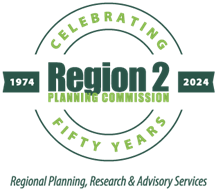What Influences Transportation Decisions?
Fixing American’s Surface Transportation Act (FAST Act), signed by President Obama on December 4, 2015, and its predecessors – Moving Ahead for Progress in the 21st Century (MAP-21), the Safe, Accountable, Flexible, Efficient Transportation Equity Act: A Legacy for Users (SAFETEA-LU) of 2005, the Transportation Equity Act for the 21st Century (TEA-21) and the Intermodal Surface Transportation Efficiency Act (ISTEA), have given the transportation industry a dramatic redirection from the major focus for highway building, which has been in place since the start of the interstate system in the 1950’s.
The FAST Act provides long-term funding certainty for surface transportation, meaning States and local governments can move forward with critical transportation projects, like new highways and transit lines, with the confidence that they will have a Federal partner over the long term. The FAST Act maintains the focus on safety, keeps intact the established structure of the various highway-related programs, continues efforts to streamline project delivery, and, for the first time, provides a dedicated source of federal dollars for freight projects. Established programs for transit, non-motorized, rail, and other infrastructure is encouraged. The FAST Act recognizes the important of planning and the process of evaluating, selecting and managing projects within the transportation program. Transportation planning historically includes setting goals and objectives, identifying plans and projects, and establishing management systems to monitor outcomes.
Every metropolitan area with a population greater than 50,000 is required to have a Metropolitan Planning Organization (MPO) to provide a forum for transportation decision-making and coordinated approach to transportation improvements. MPOs, in cooperation with state and local transportation operators and interests, are responsible for developing a 20-year long range transportation plan (LRTP) and periodic development of a 4-year programming document for implementing projects called the Transportation Improvement Plan (TIP). The Region 2 Planning Commission (R2PC) serves as the MPO for the Jackson Metropolitan Area and the committees which comprise the Jackson Area Comprehensive Transportation Study (JACTS) serve as advisory bodies to the R2PC. JACTS also works with the US Department of Transportation’s Federal Highway Administration (FHWA) and Federal Transit Administration (FTA) and the Michigan Department of Transportation (MDOT) to ensure local compliance with MAP-21 and other federal and state transportation regulations.
Agencies are getting guidance on implementing some aspects of the FAST Act from state and federal agencies. Many of the components of the law are similar to MAP-21, the previous federal transportation bill, including public participation and input in all transportation plans and programs. To meet all of the criteria specified, the Region 2 Planning Commission has developed a Public Participation Plan, which provides the public with opportunities to impact and comment on the transportation decisions being made for the Jackson Metropolitan Area. The Region 2 Planning Commission also maintains an extensive mailing list of individuals, public and private organizations, and governmental units that are notified of important transportation issues and during the development process of transportation plans.
How Are Projects Selected?
MPO’s are charged with the developing a 20-year Long Range Transportation Plan which is to be an outline of the transportation needs of the area for the next two decades. Projects programmed into the shorter four-year Transportation Improvement Program (TIP), are to be extracted from the Long Range Transportation Plan. The cities, county road commissions, and transit agencies indicate priorities for projects under their respective jurisdictions as projects move to the TIP programming stage.
The majority of the federal funding for projects programmed in the TIP is provided through the Surface Transportation Program (STP), a block grant type of program that may be used by the States and localities for any road improvements located on roadways included on the National Functional Classification System. Transit capital projects and non-motorized projects are also eligible for funding under this program. The Jackson urban area is targeted by the Michigan Department of Transportation (MDOT) to receive approximately $1,600,000 annually in federal urban STP funds. The JACTS committees are also responsible for allocating approximately $ 800,000 annually in rural STP and Transportation Economic Development-Category D funds, which can only be used outside the Jackson urbanized area boundary. All projects are funded at an 80% federal/20% local match ratio. The target funding amount is based on the area population.
